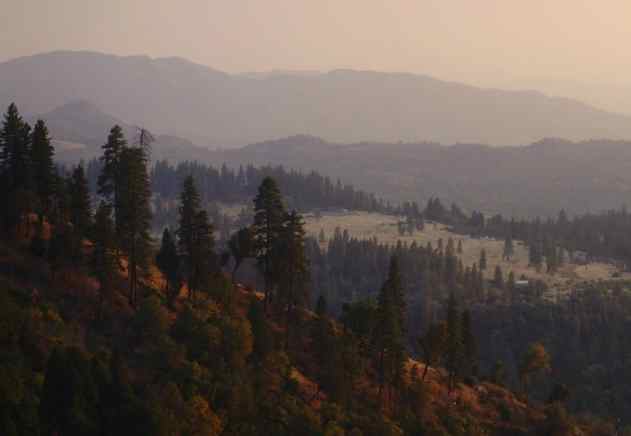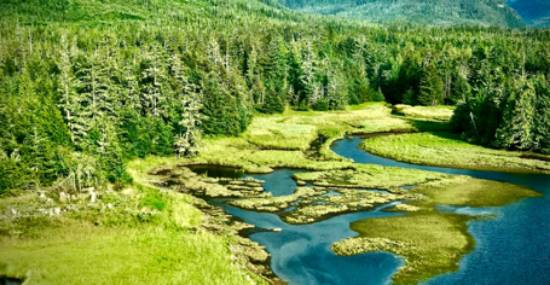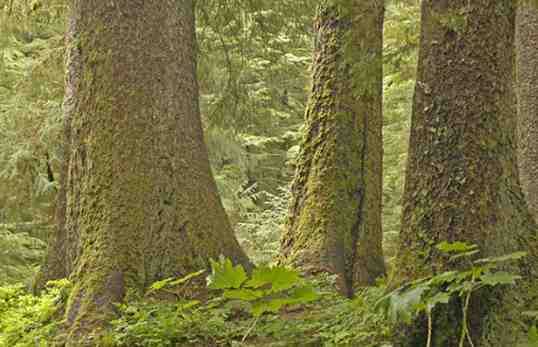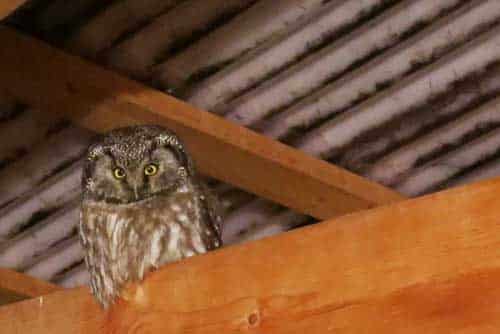Service will now undertake important economic assessment to inform final designation
Washington, DC – Yesterday, in compliance with an order from a U.S. District Court, the U.S. Fish and Wildlife Service announced a science-based critical habitat proposal for the northern spotted owl that begins a public review process to determine what forest lands should be designated as critical habitat in a final rule that will be published in November. This proposal recommends substantially increasing active management of forests, consistent with ecological forestry principles, in areas designated as critical habitat. Today’s announcement, which identifies areas that may be considered for the final designation, also emphasizes significant benefits of excluding private lands, and that consideration along with the important economic assessment will help inform areas that will be excluded from the final designation.
The proposal continues protections for remaining old growth forests while recommending ecological timber harvests to improve habitat, as well as resilience to wildfire and insect infestations. In addition, the Fish and Wildlife Service today took an important step toward experimental removal of the encroaching barred owl from certain areas. These are all key actions identified in the 2011 revised Recovery Plan for the Northern Spotted Owl. Overall, northern spotted owl numbers have been declining 2.9% on average per year – leading to an estimated 40% decline in numbers over the last 25 years. The presumed causes of the decline are the continuing effects of lost old growth forest habitat prior to the 1990s and increasing competition from the barred owl.
“We must move forward with a science-based approach to forestry that restores the health of our lands and wildlife and supports jobs and revenue for local communities,” said Secretary of the Interior Ken Salazar. “By confronting the growing impact of the invasive barred owl and expanding the scientific foundation for wise management of our forests, we can give communities, foresters, and land managers additional tools they need to forge a healthier and more productive future for our forests. Yesterday’s announcement provides a foundation from which we can assess the appropriate areas for final designation – a decision which will be based on science and informed by the important economic analysis and public feedback to be conducted over the coming months.”
Yesterday’s announcements follow a visit last week by Secretary Salazar to one of three ecological forestry pilot projects in Oregon, where – as suggested by Dr. Norm Johnson and Dr. Jerry Franklin – he proposed an expansion of active forest management in Western Oregon to provide sustainable timber and healthier habitat for wildlife and fish.
“The forestry pilot projects that our research has helped inform and implement will result in good size timber for local mills, and will leave behind dry forests that are healthier and more fire resistant and moist forests that are more diverse and provide better habitat for wildlife,” said Dr. Franklin and Dr. Johnson. “The endorsement of ecological forestry in today’s announcement provides a strong foundation to apply these balanced principles across the Northwest forests and help demonstrate that we can both protect old growth and provide sustainable timber jobs while restoring the health of our forests.”
During that trip, Salazar discussed the 150 timber sales planned by the Bureau of Land Management (BLM) over the next two years in Oregon, including a target of 197 million board feet of proposed sales in western Oregon in FY 2013. Salazar announced that as part of this target, the BLM will plan for at least five additional timber sales (totaling approximately 15 million board feet) using ecological forestry principles. In addition– as part of the commitment to restoring healthy habitat and providing sustainable timber harvest and revenues – the BLM will undertake Resource Management Plan revisions which will provide goals, objectives, and direction for the management of approximately 2,500,000 acres of BLM-administered lands in western Oregon.
Interior is also working closely with USDA’s Forest Service, which recently announced steps to improve forest restoration through active management and increase forest products sold by the National Forests from 2.4 billion board feet in 2011 to 3 billion board feet no later than 2014.
“The Fish and Wildlife Service’s critical habitat proposal recognizes the need for active management of forests and provides a solid scientific foundation for work that needs to be done to improve forest health,” said Tom Tidwell, Chief of the U.S. Forest Service. “Increased restoration work will benefit the environment and people, with more resilient ecosystems and improved wildlife habitats while providing outputs of forest products that contribute to local economies.”
As part of this Administration’s commitment to ensuring that rules comply with President Obama’s Executive Order on regulatory reform, today’s announcement is accompanied by a Presidential Memorandum that directs Interior to take a number of steps before the final plan is identified, with a focus on maximizing flexibility and promoting economic growth. Specifically, the memorandum directs Interior to provide clear direction for industry and other stakeholders on how logging can be conducted in critical habitat as part of the final rule, and directs Interior to give careful consideration, to the extent permitted by law and science, to providing the maximum exclusion of areas from the final rule – with a particular focus on maximizing eligible exclusion of private and State lands. Additionally, the President is directing Interior to revise a nearly three-decade old rule so that, rather than conducting economic analysis after critical habitat is proposed, economic analyses are completed and made available for public comment at the sametime as a critical habitat proposal is published.
Critical Habitat Proposal
Today’s proposal – which is based on the best available science and the revised 2011 Recovery Plan for the Northern Spotted Owl – identifies lands that are potentially eligible for critical habitat designation, but does not mean that they will be included in the final designation. Over the coming months the Service will conduct an economic analysis, assess scientific information, and receive public input that will help inform which of these potential areas may be included in the final critical habitat. The proposal recommends that in areas that are currently designated as critical habitat as well as any that are designated as a result of this process, appropriate timber harvests consistent with ecological forestry principles be encouraged, a major change from previous critical habitat designations.
“The science is telling us that unmanaged, fire-prone forests aren’t healthy for either the landscape or the spotted owl,” said Director of the Fish and Wildlife Service Dan Ashe. “In fact, the Fish and Wildlife Service is strongly recommending an active forest management approach – like the forestry practices that the Forest Service and BLM are expanding – to restore forest health, increase resilience, and foster diversity.”
The Fish and Wildlife Service has already taken the step of proposing to exclude several categories of land from the final critical habitat designation, including approximately 4 million acres of state lands, private lands, and federal lands – such as national parks and wilderness areas – much of which is already managed for conservation. The Service will also use public and stakeholder feedback, as well as the information from the economic analysis, to assess additional areas for exclusion from the remaining approximately 10 million acres that are initially eligible for potential critical habitat designation. It is expected that as a result of these additional exclusions, the size of the final designation would be reduced further.
Critical habitat designation only pertains to federal activities in designated areas. Critical habitat designations do not provide additional protection on non-federal lands unless proposed activities involve federal funding or permitting.
Today’s critical habitat proposal revises a 2008 critical habitat designation in response to a court order.
Barred Owl Control
A draft Environmental Impact Statement (EIS) also announced today outlines options for experimental removal of barred owls from certain areas throughout the spotted owl’s range to test the effect of such removal on spotted owl population trends. The Service is considering combinations of both lethal and non-lethal (capturing and relocating or placing in permanent captivity) methods for removing barred owls.
“We can’t ignore the mounting evidence that competition from barred owls is a major factor in the spotted owl’s decline, and we have a clear obligation to do all we can to prevent the spotted owl’s extinction and help it rebound,” said Ashe.
If the barred owl removal experiment proceeds and the effects of removal are positive, the Service may consider the feasibility and efficacy of barred owl removal on a broader scale. This action would involve a separate National Environmental Policy Act process. For more information about the barred owl draft EIS, click here.
The Service will be accepting public comments for 90 days on both the proposed critical habitat and barred owl draft EIS upon publication in the Federal Register, anticipated within the next two weeks. There will also be an additional public comment period later this spring on the economic analysis information for the critical habitat proposal. For additional information regarding critical habitat and the Endangered Species Act, click here.
Source: Department of the Interior






